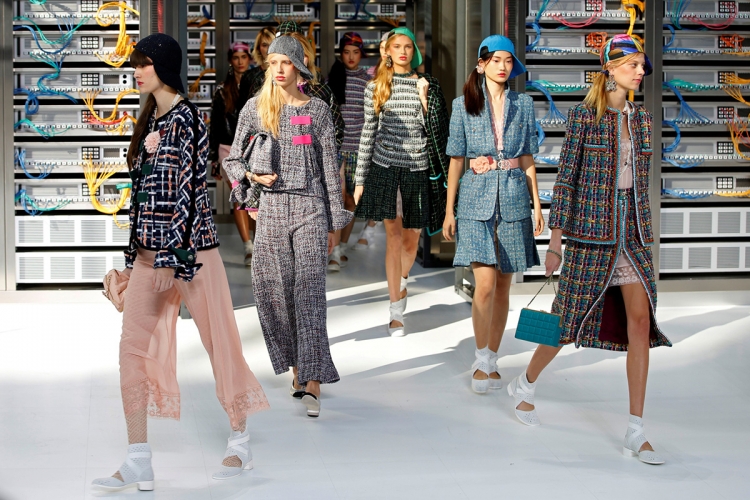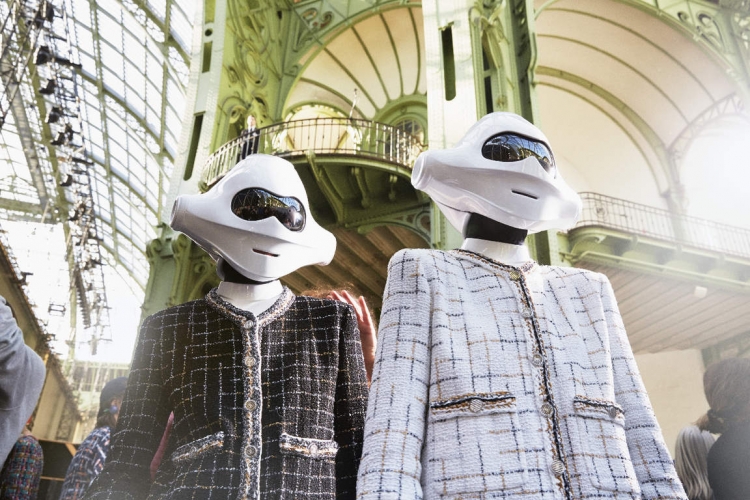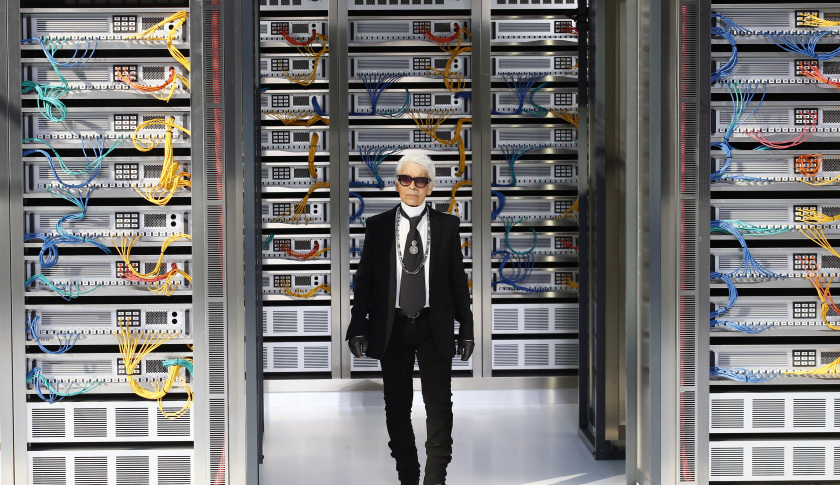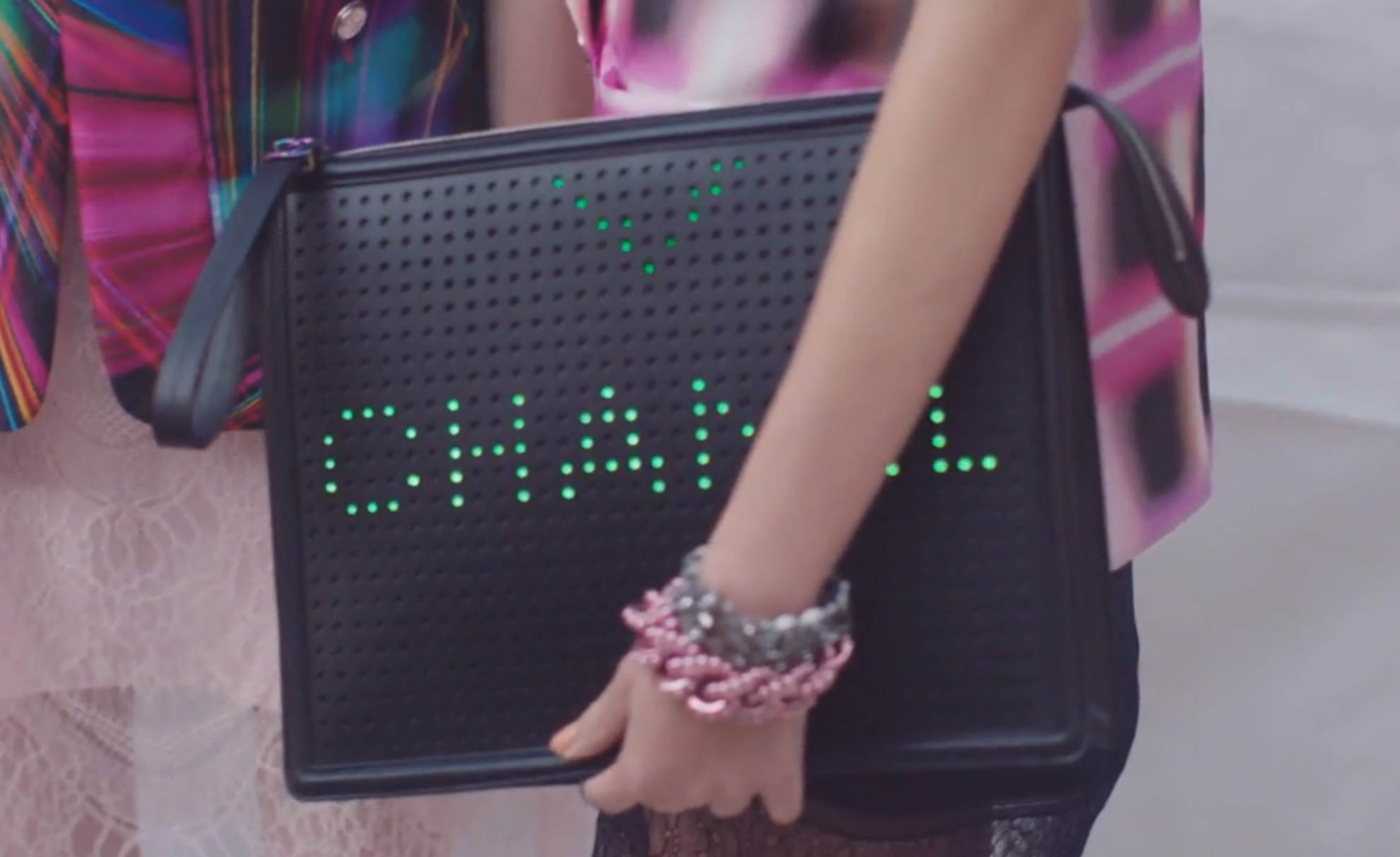Designers Transform Tech into Chic

It is impossible to deny technology's importance within the fashion industry. Technology is the reason why fashion brands have to be constantly innovative, as they must excel in today’s globalized market. Many brands have adapted their business models to compete in a newly hyperlinked world, and some are taking tech to the runway.
Most brands clearly understand how inventive they must be to succeed in such a cut-throat industry and as a result have exploited the “see-now, buy-now” model. For instance, the American brand Rebecca Minkoff collaborated with Zeekit, a shopping application during Fashion Week this year. By uploading a picture of themselves, a shopper can see how they would look wearing the latest’s show collection pieces. They can then instantly buy it online, right off the runway. This partnership is a clever approach to promote this popular new “see-now, buy-now” concept.
During the Paris Fashion Week, the striking innovation, however, did not limit itself to web-based consumer models. Rather, it was part of the actual clothing, the show, and noticeably the mise-en-scène.
Photo Credit: ChanelHussein Chalayan,who is of British/Turkish Cypriot decent, was named the British Designer of the Year in 1999 and 2000. Time and again, the designer highlights and integrates his mixed culture as well as his passion for the art of traveling in his past collections. However, what Chalayan is mainly known for is his extremely unique sense of creativity. Amongst his more remarkable works are a coffee table transformed into a skirt for his Fall/Winter 2000 collection, as well as water soluble uniforms which melt in order to uncover the 3D dress worn underneath in the Spring/Summer 2016 fashion show.
 Image Credit: Intel Corporation
Image Credit: Intel Corporation
The designer has said, "Only with technology can you create new things in fashion. Everything else has been done." This season, for his collection entitled Room Tone, the fashion-tech pioneer opted to collaborate with Intel, an American technology company, and showed how the models’ hearts and minds function while feeling anxious. The goal was to improve human lives by shedding light on the issue of stress. Glasses and belts were provided by Intel and as the models were walking the runway, a projection of their stress level was shown on the wall through the biofeedback sent from the connected accessories that were worn.
 Image Credit: Intel Corporation
Image Credit: Intel Corporation
Chanel is known for its grandiose fashion shows, theatrical mise-en-scènes and performances. This year, Chanel’s legendary creative director, Karl Lagerfeld, showed a new futuristic and digital side of the brand. While the Grand Palais – the historical location where Chanel has been showing their collections for years – has been transformed into a Data Center, and models dressed as robots opened the show.
Fashion designer Karl Lagerfeld appears at the end of the presentation of Chanel's Spring-Summer 2017 ready-to-wear fashion collection presented Tuesday, Oct.4, 2016 in Paris. Photo Credit: Francois Mori, APLagerfeld designed tweed baseball caps in reference to the typical stereotyped high-tech entrepreneur's style identity. Additionally, the Chanel bags and clutches featured a moving and interactive design of the brand’s logo signature through circuit boards and electric currents. Ironically, even though their latest collection was all about technology and futurism, Chanel is one of the few brands in the luxury sector, that hasn’t launched their own e-commerce service yet.
Image Credit: ChanelCertainly, it was not surprising to see that fashion brands are collaborating with technological companies and they are encouraging to be as innovative as possible. However, what was more unexpected was the fact that this trend took place during Paris Fashion Week. Paris is known to be the capital of fashion, but it is also a city that is not as involved in technology and innovation like other big capitals/cities are.
In addition, the fact that both Hussein Chalayan and Chanel presented their collections, which are related to data information, is alarming. Are they trying to warn us, in a way or another, that privacy doesn’t exist anymore? Or are they simply trying to show what the future will look like?
Although, fashion and technology are two industries that might seem completely different, they are deeply interconnected. As technology grows, the fashion industry must follow suit.










